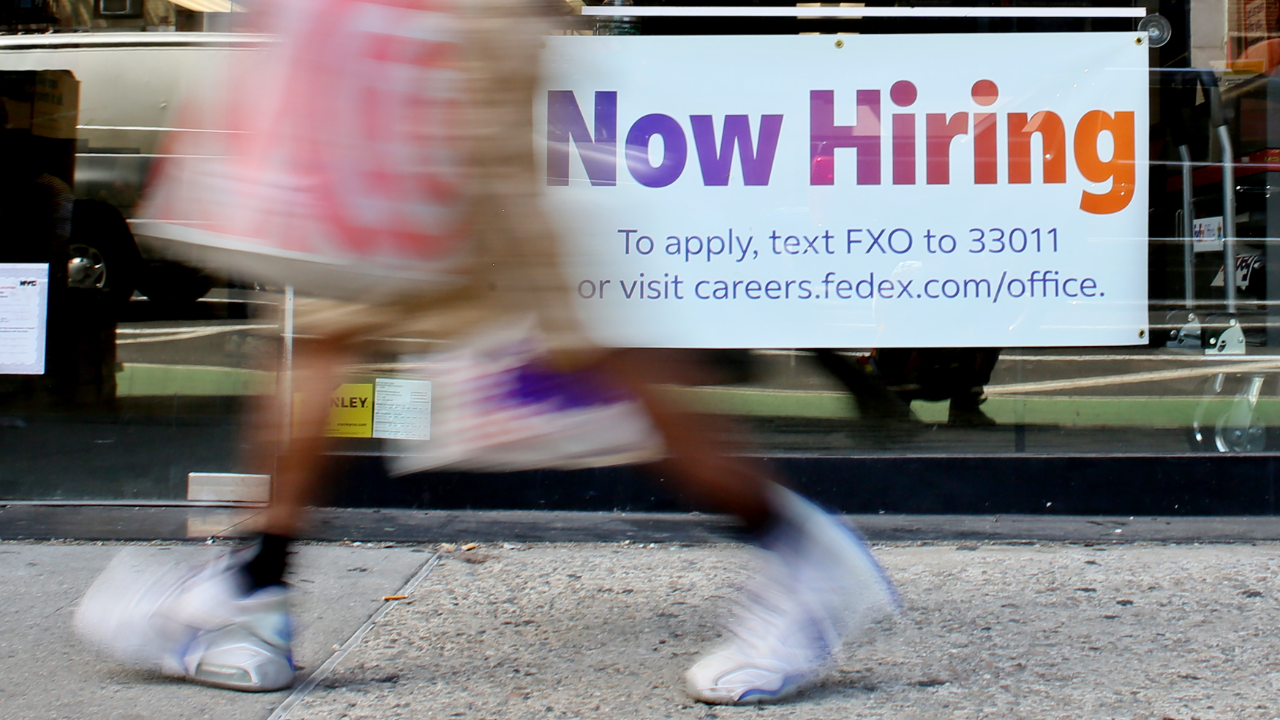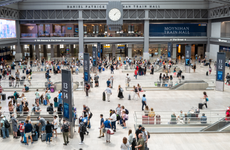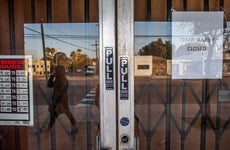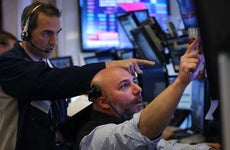Want to know when a recession could be coming? Watch these 5 signs

The Bankrate promise
At Bankrate we strive to help you make smarter financial decisions. While we adhere to strict , this post may contain references to products from our partners. Here's an explanation for .
Even in normal times, the U.S. economy is confusing. Add in the latest debate perplexing even the experts of whether we’re in a recession right now, and you’ll be left scratching your head for sure.
Not helping the confusion is economists’ push back against the long-relied-on recession rule of thumb: two straight quarters of decline in economic activity, reflected in gross domestic product (GDP). After data released in July showed the U.S. economy contracted in both the first and second quarters of 2022, a chorus of economists quickly avoided making the official call, pointing out the historically strong job market.
To be sure, joblessness hasn’t been this rare since the 1960s, employers have added 3.3 million jobs so far this year and businesses are interested in creating almost 11 million more — none of which are symptoms of a downturn.
Technically speaking, the only recession call that matters is the one coming from a group of research economists on the National Bureau of Economic Research’s Business Cycle Dating Committee. Those experts are the sole arbiter of declaring when recessions start and end, and they look at more data sets than just GDP.
To help with the confusion and aid consumers in their own quest to determine when a recession might begin, Bankrate analyzed those key economic indicators and asked 15 additional economists about signs to watch. Here are the five best indicators of a recession more specific than the broad scorecard that is gross domestic product, and what they’re all currently saying about the economy.
1. Consumer spending adjusted for inflation
The powerhouse of the U.S. economy, consumer spending makes up two-thirds of economic growth. Consumers are out shopping, dining out and buying new products even in the face of inflation.
Personal consumption adjusted for inflation is up about 5 percent from before the pandemic. No doubt, the pace has notably slowed, rising just 0.3 percent on average so far this year, compared with close to a 1 percent gain at this time last year. Yet, consumption has only fallen from month to month one time this year — between April and May.
Consumer spending gives companies the wherewithal to keep hiring and expanding, propelling growth forward.
The ultimate risk, however, is what happens from here. Nearly 3 in 4 Americans in a February Bankrate poll say they’ve had to cut back on spending and dip into their savings in the face of those higher prices.
2. Personal income adjusted for inflation
To keep spending, consumers need money. Even adjusted for inflation, personal income is near an all-time high and has held steady. However, Americans have taken clear hits this year as prices rise by the fastest pace in four decades. Real personal income declined in two of the past six months.
3. Manufacturing and trade sales adjusted for inflation
Part of consumption, the committee also tracks wholesale-retail sales, adjusted for inflation. Officials cite a manufacturing and trade sales report as the best measure, which follows the total value of all goods sold within the U.S. So far, however, those receipts have dropped three out of five months in the year, similar behavior to previous recessions — though possibly reflecting a post-lockdown reshuffling in spending from goods to services.
4. Industrial production
U.S. output among manufacturers and miners as well as electric and gas utility companies hasn’t yet turned a corner. Production is back at levels seen before the pandemic and even reached an all-time high in July. The gain, however, was largely fueled by strength in the auto sector. Excluding that jump, production would’ve increased by a more modest 0.3 percent in the month.
5. The labor market
Consumption may keep the economy afloat, but the job market keeps a floor under spending. In other words, the job market is a crucial corner of the financial system to watch when you want to gauge the economy.
At a high level, economists say the best slices of the labor market to look at include:
- New and continuing applications for unemployment benefits
- Duration of unemployment, to see how long people are looking for a job
- The number of jobs currently in the economy, along with how many jobs are being created each month
- The unemployment rate
- The number of job openings
One caveat: Labor market data tends to lag the rest of the economy. During the Great Recession, for example, employers didn’t start cutting jobs until two months into the downturn. They also kept cutting positions 16 months after the recession had ended.
Unemployment claims are a higher-frequency indicator because they’re released weekly. They can sometimes be noisy — the system itself is also prone to fraud — but they’re still useful, particularly if you zoom out for the full picture.
The number of new applications for unemployment benefits has jumped 51 percent since the Fed’s first rate hike on March 16, reflecting an upward trend as the economy slows, thanks to tighter monetary policy. Another troubling sign: The four-week moving average of Americans applying for new benefits is slightly higher than it was before the pandemic. Yet, continuing claims are even lower today than before the pandemic, suggesting Americans aren’t having to look long to find new employment.
Part of the reason why Americans could be finding new jobs so easily is because employers still have a near-record number of job openings. To be sure, the number of open positions has slowed since the start of the year — down from 11.8 million in March 2022 to 10.7 million in June — but there are still close to two jobs per every jobless individual.
Payroll growth has slowed from this time last year, but employers are creating new jobs three times faster than before the coronavirus pandemic. The U.S. economy has added 3 million jobs this year, at an average monthly pace of 471,000.
It isn’t just employers’ appetite to hire that can ultimately influence employment — but also how many individuals are in the labor force, looking for work. A separate gauge of employment from the Department of Labor shows there are slightly fewer people employed today than before the pandemic, with the pace of individuals finding new employment slowing since 2021.
Bottom line
It can take months, if not more than a year, for Americans to officially know they’re living through a recession. It can take months before you start to see multiple releases moving in the same direction, and multiple data releases are required to reveal the full picture.
It often leaves the Business Cycle Dating Committee waiting to make their call. During the Great Recession, the group took a year to officially declare the economy was in a downturn.
All of that underscores why it’s important to pay attention to what’s happening in the economy for yourself. Doing so can help arm you with the knowledge you need to prepare for a downturn.
“The reality is that most Americans haven’t even heard of this group,” says Mark Hamrick, Bankrate senior economic analyst, referring to the committee. “But it is important that we have some sense that the economy, like our own lives, tends to progress through cycles. These include periods of expansion, and downturns or recessions. When people ponder or ask whether a recession will occur, one answer is that they are inevitable, but not always imminent.”
Related Articles

Worried about a potential recession? Here’s 9 steps to prepare your finances now


When will the U.S. economy get back on track following coronavirus shock? Watch for these 5 signs
